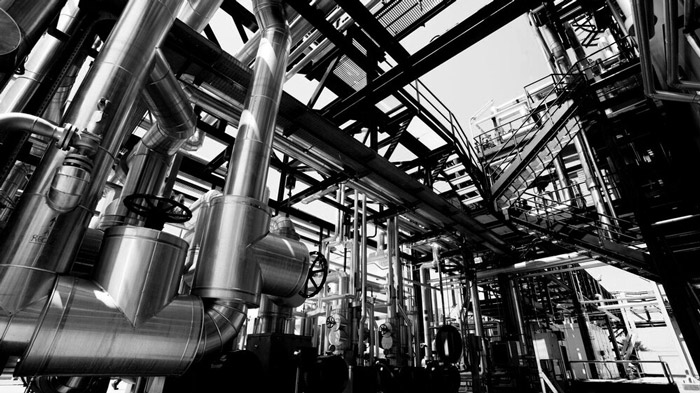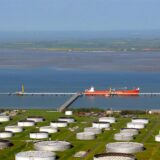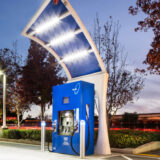
City in California to build world’s largest green hydrogen production facility
The city of Lancaster, in the U.S. state of California, announced that it is building the world’s biggest green hydrogen production facility using SGH2 technology, which uses recycled mixed paper waste to produce “greener than green” hydrogen that reduces carbon emissions by two to three times more than green hydrogen produced using electrolysis and renewable energy, and claims to be five to seven times cheaper.
The city of Lancaster will host and co-own the green hydrogen production facility, according to a recent memorandum of understanding.
The SGH2 Lancaster plant will be able to produce up to 11,000 kilograms of green hydrogen per day, and 3.8 million kilograms per year – nearly three times more than any other green hydrogen facility, built or under construction, anywhere in the world. The facility will process 42,000 tons of recycled waste annually. The city of Lancaster will supply guaranteed feedstock of recyclables, saving between USD50 to USD75 per ton in landfilling and landfill space costs. California’s largest owners and operators of hydrogen refueling stations (HRS) are in negotiation to purchase the plant’s output to supply current and future HRS to be built in the state over the next 10 years.
“As the world, and our city, cope with the coronavirus crisis, we are looking for ways to ensure a better future. We know a circular economy with renewable energy is the path, and we have positioned ourselves to be the alternative energy capital of the world. That’s why our partnership with SGH2 is so important,” said Lancaster Mayor R. Rex Parris. “This is game-changing technology. It not only solves our air quality and climate challenges by producing pollution-free hydrogen. It also solves our plastics and waste problems by turning them into green hydrogen, and does it cleaner and at costs far lower than any other green hydrogen producer.”
SGH2 Energy Global, LLC (SGH2) is a Solena Group company, focused on the gasification of waste into hydrogen and holds the exclusive rights to build, own and operate Solena Group’s SPEG technology to produce green hydrogen. Solena Group, originally Global Plasma Systems, was founded by Dr. Robert Do, a biophysicist, medical doctor and entrepreneur and Dr. Salvador Camacho, “the father of plasma technology.” The technology has been vetted and validated, technically and financially, by leading global institutions including the U.S. Export-Import Bank, Barclays and Deutsche Bank, and Shell New Energies’ gasification experts.
“We are the only company in the world delivering green hydrogen that is cost competitive with the cheapest, dirtiest hydrogen made from coal and gas, and much less expensive than other green hydrogen. Our technology can scale quickly and produce fuel 24/7, year-round,” said Do.
“Countries around the world are waking up to the critical role green hydrogen can play in increasing energy security and lowering greenhouse gas emissions. But, until now, it has been too expensive to adopt at scale,” said Hanna Breunig, PhD, of Lawrence Berkeley National Laboratory’s (Berkeley Lab) Sustainable Energy Systems Group.
A consortium of leading global companies and top institutions have joined with SGH2 and the city of Lancaster to develop and implement the Lancaster project, including: Fluor, Berkeley Lab, University of California Berkeley, Thermosolv, Integrity Engineers, Millenium, HyetHydrogen, and Hexagon. Fluor, a global engineering, procurement, construction and maintenance company, which has best-in-class experience in building hydrogen-from-gasification plants, will provide front-end engineering and design for the Lancaster facility. SGH2 will provide a complete performance guarantee of the Lancaster plant by issuing a total output guarantee of hydrogen production per year, underwritten by the largest reinsurance company in the world.
SGH2’s hydrogen is said to be “greener than green” because in addition to producing carbon-free hydrogen, SGH2’s patented Solena Plasma Enhanced Gasification (SPEG) technology gasifies biogenic waste materials, and uses no externally sourced energy. Berkeley Lab performed a preliminary lifecycle carbon analysis, which found that for every ton of hydrogen produced, SPEG technology reduces emissions by 23 to 31 tons of carbon dioxide equivalent, which is 13 to 19 tons more carbon dioxide avoided per ton than any other green hydrogen process. SGH2 claims its hydrogen is five to seven times cheaper than other green hydrogen.
Producers of so-called blue, gray and brown hydrogen use either fossil fuels (natural gas or coal) or low-temperature gasification (<2000° C), which produces dirty syngas with toxic tars and low volume of hydrogen. Other green hydrogen producers use electrolysis dependent on large amounts of intermittent renewable energy and deionized water, which is green if it comes from 100% renewable power, but comes at a high cost (USD10-15 per kilogram) and lacks reliability.
“Stork, a Fluor company, is a global leader in providing clients with operations and maintenance solutions throughout the entire plant lifecycle,” said Taco de Haan, president of Stork. “As part of the design team we look forward to assisting in the optimization of plant design with reliability-based maintenance principles followed by delivering the actual plant operations and maintenance services. We are proud to be a part of this partnership as its objectives are so well aligned with Stork’s sustainability agenda and our commitment to the global energy transition.”
SGH2 is in negotiations to launch similar projects in France, Saudi Arabia, Ukraine, Greece, Japan, South Korea, Poland, Turkey, Russia, China, Brazil, Malaysia and Australia. SGH2’s stacked modular design is built for rapid scale and linear distributed expansion and lower capital costs. It does not depend on particular weather conditions, and does not require as much land as solar- and wind-based projects.
The Lancaster plant will be built on a 5-acre site, which is zoned heavy industrial, at the intersection of Ave M and 6th Street East. It will employ 35 people full-time once operational, and will provide more than 600 jobs during 18 months of construction. SGH2 anticipates breaking ground in the first quarter of 2021, start-up and commissioning in the fourth quarter of 2022, and full operations in the first quarter of 2023.
The Lancaster plant output will be used at hydrogen refueling stations across California for both light- and heavy-duty fuel cell vehicles. Unlike other green hydrogen production methods that depend on variable solar or wind energy, the SPEG process relies on a constant, year-round stream of recycled waste feedstocks, and therefore can produce hydrogen at scale more reliably.














